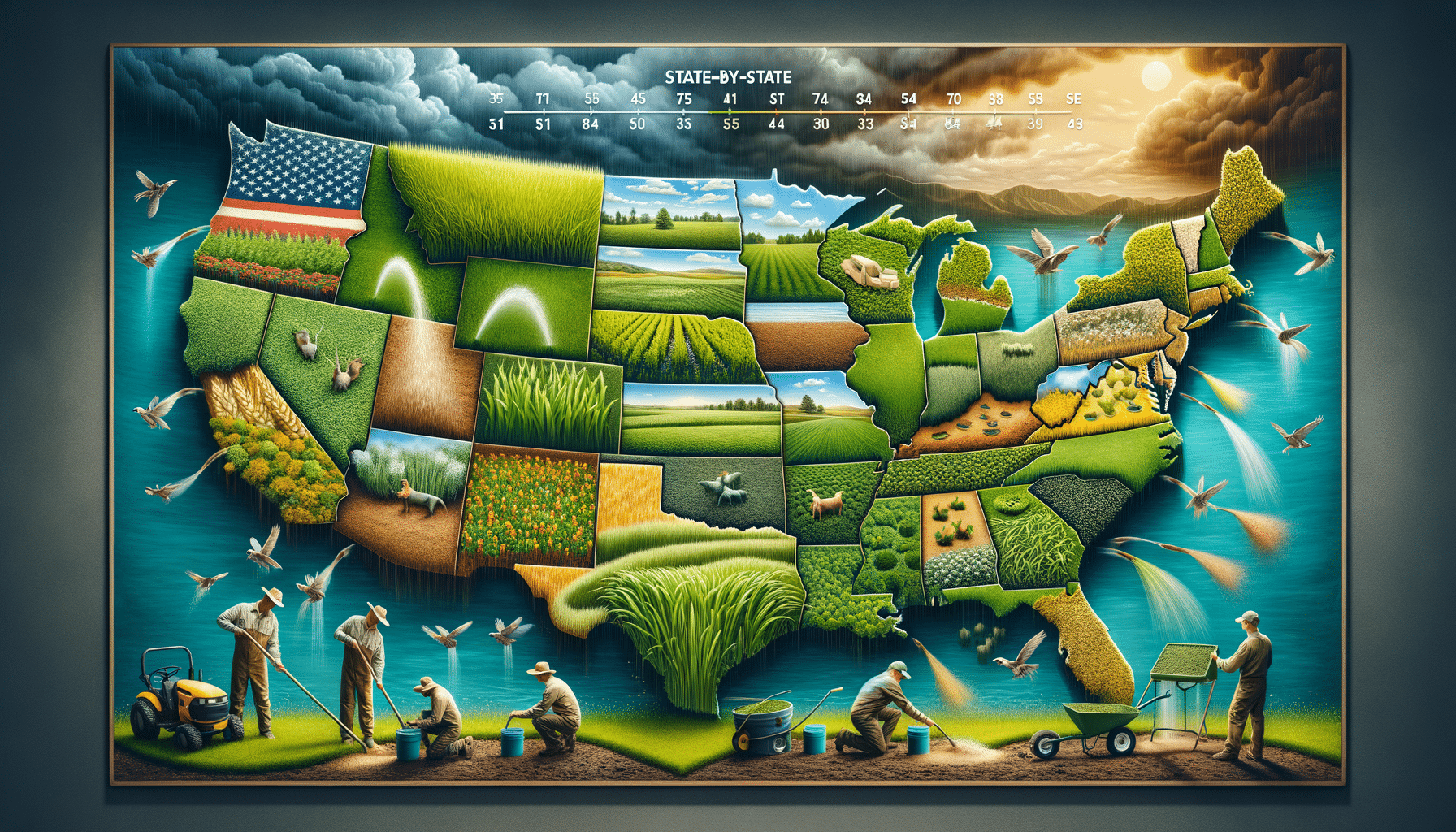
State-by-State Lawn Care: Perfect Grass Planting & Fertilizer Timing Explained
Introduction to State-by-State Lawn Care
Lawn care is an essential aspect of home maintenance that enhances the aesthetic appeal and value of your property. However, the approach to lawn care can vary significantly depending on the geographical location and climate conditions of your state. Understanding the nuances of grass planting and fertilizer timing for your specific region can lead to a lush, green lawn that is both resilient and visually appealing.
Understanding Climate Zones and Grass Types
The first step in effective lawn care is understanding the climate zone of your state. The United States is divided into several climate zones, each with unique characteristics that influence the type of grass that will thrive. Cool-season grasses, such as Kentucky bluegrass and fescue, are suitable for northern states with cooler climates. In contrast, warm-season grasses like Bermuda and zoysia are ideal for southern states with hotter temperatures.
Choosing the right grass type is crucial because it affects the lawn’s growth cycle, water requirements, and resistance to pests and diseases. For instance, cool-season grasses grow vigorously in spring and fall, while warm-season grasses peak in the summer. Knowing your state’s climate zone will guide you in selecting the grass type that aligns with your local conditions.
Optimal Grass Planting Seasons
Timing is everything when it comes to planting grass. The ideal planting season varies by state due to differences in climate. In northern states, fall is generally the best time to plant cool-season grasses, as the cooler temperatures and increased rainfall create optimal growing conditions. In southern states, late spring to early summer is perfect for planting warm-season grasses, allowing them to establish before the peak heat of summer.
Planting grass at the right time ensures that it has the best chance to establish strong roots and a healthy growth pattern. Avoid planting during extreme temperatures, whether too hot or too cold, as this can stress the grass and hinder its development.
Fertilizer Timing and Application
Fertilizer plays a crucial role in maintaining a healthy lawn by providing essential nutrients that promote growth and resilience. The timing of fertilizer application is just as important as the type of fertilizer used. In northern states, applying fertilizer in the fall is beneficial for cool-season grasses, as it helps them recover from summer stress and prepare for winter dormancy. A second application in early spring can give the grass a boost as it emerges from dormancy.
For southern states, fertilizing warm-season grasses in late spring and summer supports their active growth period. It’s important to follow the recommended application rates and avoid over-fertilizing, which can lead to nutrient runoff and damage to the lawn.
State-Specific Lawn Care Tips
Each state has its unique challenges and considerations when it comes to lawn care. For example, states with arid climates, such as those in the Southwest, require drought-resistant grass types and efficient watering practices to conserve water. In contrast, states with high humidity may need to focus on pest control and disease prevention.
Consider local resources and extension services for tailored advice on lawn care in your state. These organizations often provide valuable insights into soil conditions, common pests, and other regional factors that affect lawn health.
Conclusion: Achieving a Lush Lawn in Every State
Achieving a lush, healthy lawn requires understanding the specific conditions of your state and tailoring your lawn care practices accordingly. By selecting the right grass type, planting at the optimal time, and applying fertilizer strategically, you can create a beautiful lawn that enhances your home and withstands the challenges of your local climate. Stay informed and adaptable to ensure your lawn remains a source of pride and enjoyment.